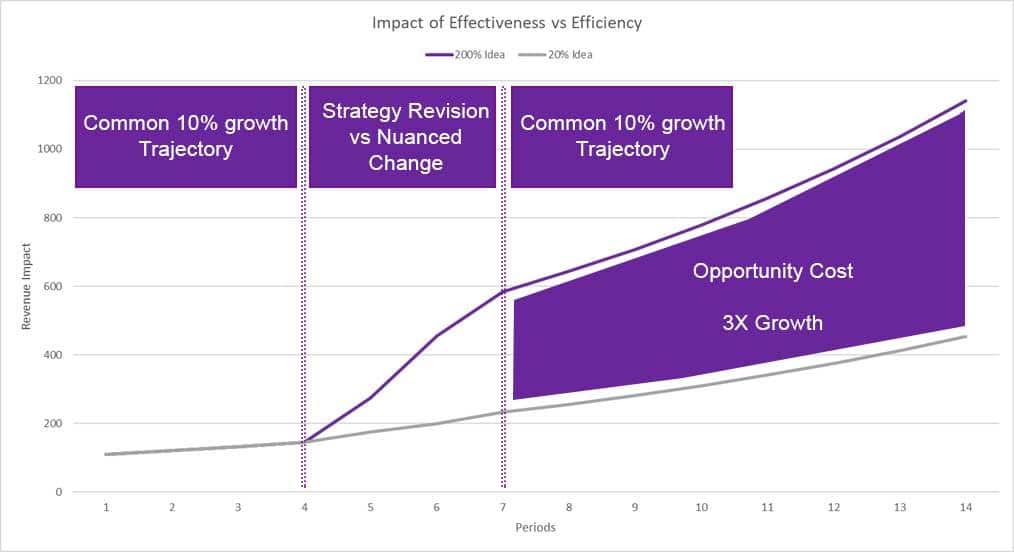Organizations have tried many different strategies to decrease meeting time and to improve meetings. I will outline a small set below that have worked well for some organizations that I’ve worked with. Not all these practices will make sense for your organization—but some just might.
1. Some organizations require approval from more senior manager for large meetings (e.g., over 10 people). This might sound a bit draconian, but it does result in more careful thought when making the meeting invite list, which is key.
2. Assign a member of the senior leadership team ownership of meetings as a key work process. By doing so, the monitoring, attention, and improvement of meetings becomes part of the organizational fabric. We do this for other extremely expensive work processes and activities. For example, we want our technology investment to be overseen by the Chief Technology or information officer.
3. Change calendar systems to default to reduced meeting times (e.g., 25 minutes and 50 minutes).
4. Assess meeting effectiveness on engagement and pulse surveys. Create a meeting metrics dashboard and tie these to financial indicators as meetings can be costed out readily. This all serves to create accountability for making meetings better.
5. Build meeting leadership skill development into talent systems such as onboarding, high-potential initiatives, coaching, and training.
6. Consider the use of meeting-free time periods. The data are quite mixed on whether this approach works, but it still has potential if implemented effectively.
All of the above suggestions should help return time back to your team, but most importantly it should serve to make the time in meetings more effective. While you can’t control other people’s meetings, you can control your own. You can make excellent meeting choices. You can demonstrate stewardship. You can be the example that you hope others will follow in promoting meeting effectiveness. Each meeting is your opportunity to address the meeting overload issue. Take the challenge so that you can more readily find time to implement and carry out your 1:1s with excellence to maximize gains. Keep in mind:
• Eliminating meetings is not the solution. While employees often complain about the number of meetings they have, meetings are still an essential piece of organizational democracy. However, there are strategies to reduce the number and increase the effectiveness of meetings to combat the negative effects of too many meetings.
• Reduce meeting time. As a leader, you control your meetings. Start by having two conversations about your meetings. First, set expectations around when meetings are warranted and when they are not. Use these new norms to audit your current recurring meetings and adjust accordingly. Second, talk about cutting back the time meetings are held for, such as by holding what has been a 60-minute meeting for 50 minutes. Having these conversations will reduce the number and time spent in meetings, which your team will thank you for.
• Increase meeting effectiveness. Rather than eliminating meetings, the goal is to make meetings more effective which will save re-work time and allay fatigue and frustration. There are various tactics you can use as a leader that can help with this, which can be broken down into pre-meeting, during- the-meeting, and end-of-meeting practices. Examples of such practices include creating compelling agendas, actively facilitating the meetings to boost energy, experimenting with different strategies such as silent brainstorming, and having a proper close to a meeting to assure action.
• Organizational strategies exist. I have found a variety of tactics organizations themselves use to reduce the overall number of meetings they have. These range from requiring approval for larger meetings to including meeting metrics on engagement surveys. While these may be harder for you to influence and these tactics vary by organization, they do help in the pursuit of lowering the number of overall meetings.
The post How To Fix Your Meetings appeared first on ChiefExecutive.net.























































![Social Media Spring Cleaning [Infographic] Social Media Spring Cleaning [Infographic]](https://imgproxy.divecdn.com/9e7sW3TubFHM00yvXe5zvvbhAVriJiGqS8xmVFLPC6s/g:ce/rs:fit:770:435/Z3M6Ly9kaXZlc2l0ZS1zdG9yYWdlL2RpdmVpbWFnZS9zb2NpYWxfc3ByaW5nX2NsZWFuaW5nMi5wbmc=.webp)
![5 Ways to Improve Your LinkedIn Marketing Efforts in 2025 [Infographic] 5 Ways to Improve Your LinkedIn Marketing Efforts in 2025 [Infographic]](https://imgproxy.divecdn.com/Hv-m77iIkXSAtB3IEwA3XAuouMwkZApIeDGDnLy5Yhs/g:ce/rs:fit:770:435/Z3M6Ly9kaXZlc2l0ZS1zdG9yYWdlL2RpdmVpbWFnZS9saW5rZWRpbl9zdHJhdGVneV9pbmZvMi5wbmc=.webp)















